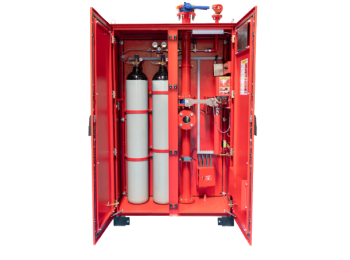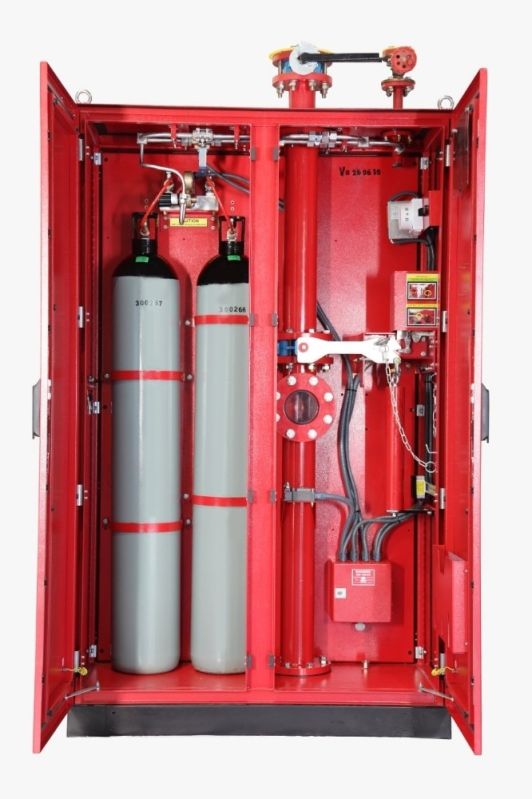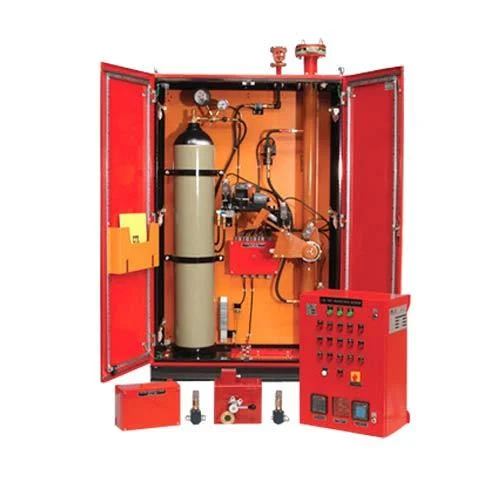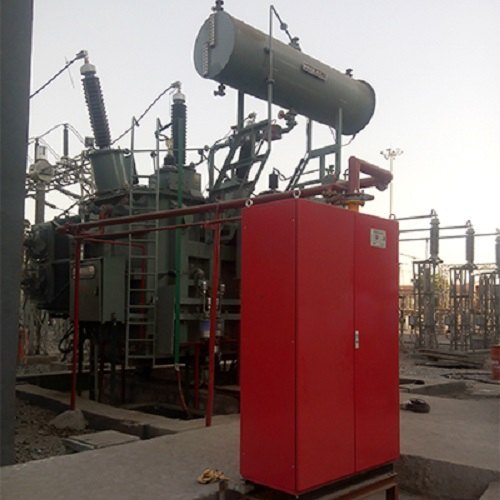1.Detection:
(a) Various internal fault feedback and trip signals initiate system activation, including Differential Trip, Restricted Earth Fault (E/F), WTI Trip, OTI Trip, PRV, Buchholz Relay, Master Trip, Temperature Detector.
(b) Temperature-Based Tripping: Trips the transformer when the temperature surpasses the permissible limit, preventing tank rupture and oil fire in cases of internal or external faults.
2.Operation:
(a) Activating Signals and Action Sequence: When all activating signals are received, the system initiates a series of actions. It drains a predetermined volume of hot oil from the top of the tank through an outlet valve to reduce tank pressure.
(b) Nitrogen Gas Injection: Simultaneously, high-pressure nitrogen gas is injected into the tank. The nitrogen gas stirs the oil at a pre-fixed rate, reducing the temperature of the top oil layer. The drained oil creates space within the tank, which is then occupied by the nitrogen, forming an insulating layer over the remaining oil, preventing fire exacerbation and providing additional safety.
(c) Conservator Isolation Valve: The transformer conservator isolation valve blocks the flow of oil from the conservator tank during critical events like tank rupture, explosion, or bushing bursts.
Features & Benefits:
• Low investment cost compared to other conventional systems, with retrofitting possible using existing openings.
• Minimal maintenance and running costs.
• Automatic and manual extinguishing system operable from the field and control room, unaffected by climatic changes.
• Suitable for indoor/outdoor installation with minimal space requirements.
• Multiple signals for activation eliminate false alarms. The system is fully automatic, unattended, and foolproof.
• Operable manually/automatically and locally/remotely.
Maintenance:
• The Nitrogen Injection and Drain method of Fire Protection and Extinguisher system is practically maintenance-free.?
• Monthly visual inspections of about 15-20 minutes and annual operational test schedules are recommended.







